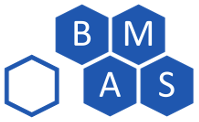Industrial Ethernet Design Guide
How is Ethernet used in industry? How is it different than an office environment? What do I need to know to talk to my team or start designing? It’s all here in plain English.
- Important components
- Design choices
- Vocabulary
- Architectural diagrams
- Industry norms
- Common industrial protocols

SUMMARY
There was a time when industrial field networks all had different hardware requirements. HART requires a unit capable of injecting and reading signals overlaid on an analog signal, RS232 requires two signal wires and a ground, and RS485 requires two pairs of differential signal wires. Many varied hardware requirements meant more investment in cables, adaptors, and training to service all the different networks. While these networks are still used, they’re losing popularity for new installations. Ethernet has overtaken all other standards, accounting for 52% of new installations according to HMS Industrial Networks’ annual study in 2018. And there’s no sign this trend will slow down any time soon.

About the Author
Jon is an engineer, entrepreneur, and teacher. His passion is creating and improving the systems that enhance human life, from automating repetitive tasks to empowering people in their careers. In his spare time, Jon enjoys engineering biological systems in his yard (gardening).




